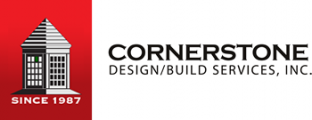
What you do before opening that paint can will make or break your project…
Let’s talk interior paint prep for a minute. For most homeowners, prep means taking the light switch covers off and turning on a radio. Even more scary, that’s what it means for some “professional” painters too who aren’t really committed to doing the job the right way.
Preparation will actually make or break your interior painting project, spelling the difference between a beautiful, lasting finish and one that is mediocre at best.
Pro Tip…
As you look for a professional interior painter, keep what you’re about to read in mind. It’ll empower you to be able to ask the right kind of questions, helping you ultimately decide if you’ve found a true pro or not.

6 steps to preparing a room for painting
Ready? Let’s dig into it:
1. Declutter the room.
If you can empty it, perfect! If not, remove as much as you can, and move the remaining items toward the center of the room to clear the perimeter. Remember, it’s not enough to just be able to walk freely; you need to consider the length of your roller as well.
2. Mask and cover.
Surface protection is key! Make sure your floors are covered, trim is masked, and that any surrounding surfaces are covered as well. Beyond paint splatter and drips, this protects against dust from sanding too.
3. Patch and repair.
Minor holes from wall hangings are easy to patch with a little dab of spackle. A professional painter can help with larger points of damage or blemishes as well - this is the time to do it.
4. Sand your walls.
Vigorously sanding your walls with a pole sander not only smooths your repairs, but also eliminates ghosts of paint jobs past (drips and dribbles). Going even further, sanding helps to create a receptive profile for your primer and paint to grip onto. In other words, it’s super important!
5. Prime the walls.
Keep in mind that a full prime isn’t always necessary. You definitely need to prime over your repairs, but it’s only essential to prime everything if you’re making a difficult color change (maybe light over dark), or switching from one type of paint to another. If your wall is in good shape and the color change isn’t drastic, you can get away with just priming the repairs then jumping right to painting.
6. Cleanup
The project isn’t done until after a thorough cleanup! Masking should be removed, drop cloths folded neatly, trash disposed of, and plate covers replaced. We also recommend vacuuming and mopping, plus a quick wipedown of surfaces, just to collect any dust that might have found its way through the masking.
Have more questions about interior painting in Central Connecticut?
Contact us at Southington Painting! We’d love to discuss your painting goals with you and answer any additional questions you might have. We’re here to help!










